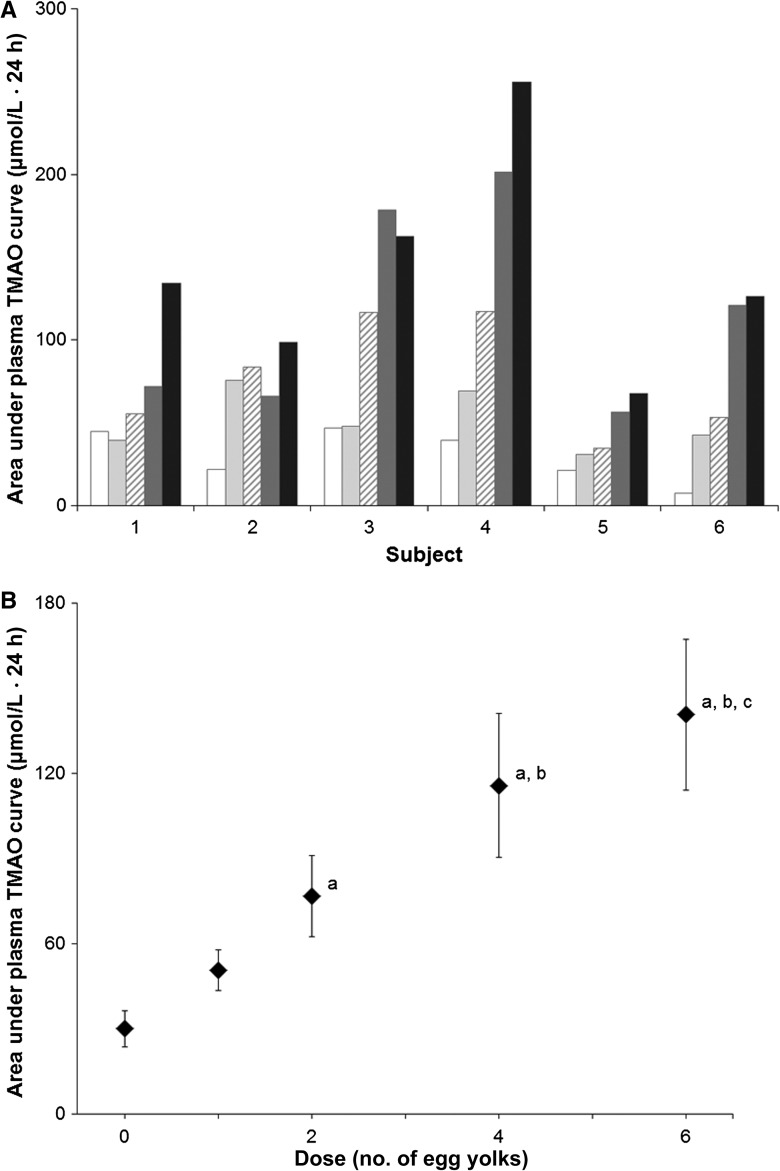FIGURE 2.
Plasma TMAO. Six healthy volunteers (subjects) consumed a standardized low-choline diet on the day before each of 5 randomly assigned doses of 0, 1, 2, 4, or 6 egg yolks. Subjects consumed the egg dose for breakfast, followed by the same standardized low-choline lunch, dinner, and snacks as consumed the previous day. Each egg dose delivered 1.14 mmol (119 mg) total choline. Therefore, 0, 1, 2, 4, and 6 egg doses provided 0, 1.1, 2.3, 4.6, and 6.8 mmol (0, 119, 238, 476, and 714 mg) total choline, respectively, in addition to the standardized diet. TMAO was measured in plasma collected from each volunteer immediately before and 1, 2, 6, 8, and 24 h after the egg dose was consumed by using liquid chromatography and electrospray ionization–isotope dilution mass spectrometry. Doses were separated by a 2–4-wk washout period. A: Area under plasma TMAO curves. Plasma TMAO data were used to calculate the total AUC for each dose for all subjects. Values for the different egg doses are represented by bars patterned as follows: 0 eggs, white; 1 egg, light gray; 2 eggs, diagonal hatch; 4 eggs, dark gray; and 6 eggs, black. B: Mean (±SE) area under plasma TMAO curves after egg doses. Data from A were used to calculate areas under plasma TMAO 24-h dose-response curves for all subjects (n = 6) for each dose. A repeated-measures regression model with the plasma TMAO AUC as the response variable and the egg dose as the predictor was used. Variable estimates (±SEs) resulting from the model were used to make pairwise comparisons for various dietary choline intakes (egg dosages). aP < 0.05, different from 0 eggs; bP < 0.05, different from 1 egg; cP < 0.05, different from 2 eggs. TMAO, trimethylamine-N-oxide.

